Round Square: LED Screens and LCD Displays of Unusual Shapes
We are used to screens: screens at home, screens in the street, screens on transport. And all these screens have the traditional rectangular format with 3:4 ratio. Wide-screen cinemas and later wide-screen digital TVs gradually prepare us for a new format of the 21st century: screens with aspect ratio 16:9. This however does not change the basic principle. The absolute majority of all screens in the world are rectangular in shape. But there are no rules without exceptions.
What can be invented in the sphere of LED screens and LCD displays that would be drastically innovative? It seems that almost nothing can be done. Unless you make them round in shape. Starting with 2007, round LCD displays appeared in product lines of major Japanese and Korean manufacturers. Toshiba spearheaded the trend, but Samsung, LG and others followed in close pursuit. At first screens were small and appeared as a marketing novelty on cell phones.
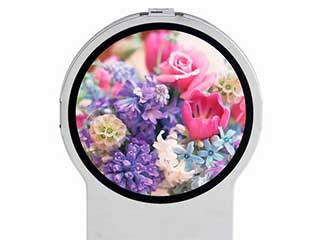 |
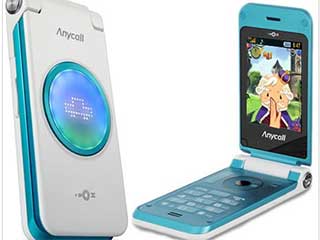 |
| Round LCD display by Toshiba | Round LCD display on a Samsung cell phone |
Take for example a round-display of flip phone by Samsung. The decision to make it was hardly related to technological necessity. The main task is to sell a product. And the product sells when it is unusual and new or seems unlike other similar gadgets.
Round LCD displays are manufactured with the help of the so called active LCD matrix technology on the basis of low-temperature, polysilica thin-film transistors (p-Si TFT). Once the round shape has become technologically possible, all other shapes of LCD displays could be achieved easily, too: triangular, oval etc.).
We should not forget though that everything new is a well-forgotten past. The first TV kinescopes were round in shape. But since on the periphery the image was non-linear and greatly distorted, it was decided to conceal the outer edges with a rectangular mask. The standard equipment is tuned to manufacture “rectangular” LCD displays. To cut off a piece of the necessary shape from the ready-made display is impossible. If you needed a display of unusual shape (e.g. round or triangular or oval) you just had to cover the standard rectangular display with a mask of proper shape.
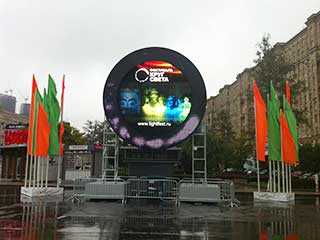 |
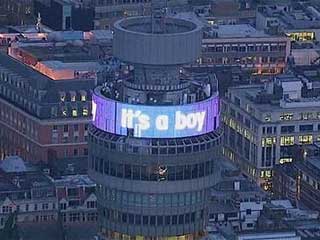 |
| Round LED screen at the Moscow Film Festival in 2013 | 360° LED screen on top of BT Tower in London |
The manufacturers of large sized LED screens decided to follow the same pattern at first. Standard modules were arranged as a square and then the unnecessary parts were covered by a wide mask to make it look like a circle. This is how the round LED screen was made for the Moscow Film festival in 2013.
However such primitive solution could not exist long in a fairly competitive market. From 2008, LED screen manufacturers started making modules with tapered sides. It became possible to “drape” modules around the façade of a building or a column during fairs and exhibitions.
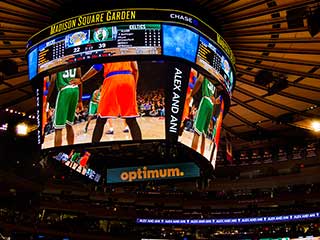 |
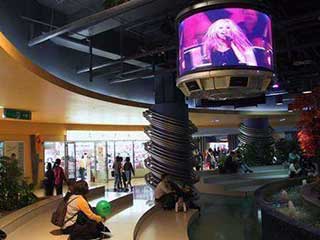 |
| The recently upgraded LED video cube in the Madison Square Garden manufactured by Daktronics | 360° LED screen by DynaScan with 2 mm pixel pitch |
To go back in time, we will see a huge LED media façade on Nasdaq stock exchange, an iconic LED structure on Times Square in New York, which was erected in 2000. The designers and engineers have created this “miracle” when LED technology was making first timid steps into the wide market of advertising. Since then the Nasdaq façade was upgraded many times. The last modification was installed in 2013 by Panasonic and the vertical resolution of the screen reached revolutionary 4K Ultra High Definition.
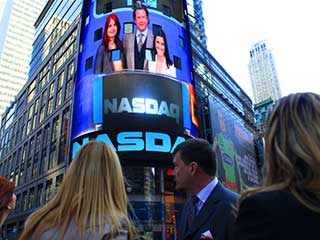 |
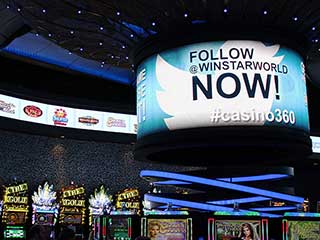 |
| LED media façade on Nasdaq stock exchange | NanoLumens 360° LED screen with pixel pitch 4 mm to WinStar World Casino |
When the new technology of the flexible LED curtain the task became much simpler: huge building façade that may be flat or may be rounded in shape is simply draped with LED curtains that may be customized for each project with no extra cost.
As the LED technology developed and matured, so did the engineering fixtures to make unusual screen structures. It became possible to make huge 360° outdoor LED screens with excellent view from all sides. The convex screens were not difficult to build from the engineering point of view, but they presented a challenge for software developers who had to find ways to adjust the image to maintain proportions. But huge hotel chains and casinos are happy to complicate life for engineers as long as they find a new way to attract attention of the public.
So far rectangular LED screens are in the lead in quantity all around the world. But round, convex and curved LED screens are becoming more and more attractive to advertisers since they enlarge the viewing angle, attract attention by their unconventional shapes, better merge with architectural landscape etc.
For that reason the LED square is gradually transforming into circle.





